Grow Some Sunshine! How to Plant Sunflower Seeds in a Variety of Colors
SunflowersSay sunflower, and you automatically visualize school bus yellow petals surrounding a black center. However, sunflowers come in an amazing variety of colors, shapes, and sizes. From bright lemon yellow to dark chocolate cherry, sunflowers are the perfect flower for summer and fall.
We’ll explain the ins and outs of planting sunflower seeds and show you all the varieties you can enjoy.

Quick Links:
Growing Sunflowers From Seeds
Sunflowers are on our list of easy flowers to grow from seed. We love that we can plant sunflower seeds directly in the garden all summer long. They are perfect for growing in a cutting garden, along a fence, wall, or just about any place where they can soak up the sun.
The scientific name Helianthus annuus comes from the Greek word “helios” for sun and “anthos” for flower. It’s not just that the flower reminds you of the sun with its shining rays, but the flower is heliotropic. This means that the flower head follows the movement of the sun.
When sunflowers are young and their flower heads are still developing, they will turn their faces east in the morning and follow the sun across the sky until it disappears on the western horizon. As the heads grow and get heavier with seeds, they won’t move as much until eventually they stay pointed east. When the heads droop down, it is a sign that the seeds are maturing.

How to Plant Sunflower Seeds
Select a sunny location.
Prepare the soil with organic matter for nutrient-rich soil.
Plant seeds 1” deep after all danger of frost has passed.
Soil temperature must be at least 50º F. 65º to 75º is ideal.
Keep soil moist but not soggy.
Sunflower seeds germinate in 7 to 14 days.
Mature sunflower plants prefer drier conditions.

Tips for planting sunflower seeds outdoors
The easiest way to plant sunflower seeds is to sow them directly into the ground outdoors. However, there is one hazard with this method. There are birds and other critters that love eating sunflower seeds. So follow these tips to avoid seed loss.
Plant sunflower seeds 1” deep. Sunflower seeds don’t need light to germinate, and this depth will keep them away from birds.
Put netting over the seeds until they are sprouted to keep birds and other animals from eating them.
Plant 2 to 3 seeds per spot in case one gets eaten. Once they have sprouted, thin out to keep the strongest plant.

How to germinate sunflower seeds indoors
Sunflower seeds can also be planted indoors to get an earlier start on the season and to protect seeds and seedlings.
Once the sunflower seeds sprout, they will need to be planted outside in 2 to 3 weeks. Sunflowers have a long taproot that can quickly reach the bottom of the pot and then become stunted. Using biodegradable pots will make transplanting easier on the roots.
Days to germination: 7-14
Planting depth: 1"
Plant Spacing: 3'
Soil Temperature: 70-75°F
Light Requirements: Full Sun

Sunflower Growing Tips
Sunflowers love the summer sunshine. They need a location with full sun throughout the day.
Spacing sunflowers is vital for achieving their full size potential. If you want large flower heads, space sunflowers further apart. 12” for small varieties, 24” for regular size, and 36” for giant sunflowers.
Another consideration for spacing is whether it is a branching variety or not. Some sunflowers only have one flower per plant, whereas others have one main flower head and multiple side flowers. Those with side flowers will need more room to grow. The spacing guidelines on the seed packets will give you the right recommendation.
When growing sunflowers for cut flower arrangements, you will want to plant them close together. This will result in smaller stalks that work better for arranging bouquets.
Sunflowers have long taproots, so water deeply, and not too often. Let the soil dry out between watering, which will encourage the taproot's deep growth.
Fertilizer is unnecessary when the soil is nutrient-rich and drains well. A pH of 6.0 to 7.5 is optimal.
Keep weeds out, so they aren’t competing with your flowers for water and nutrients.
Tall sunflowers are striking but also at risk of being blown over by the wind. Using stakes, trellises, and planting along fences can help keep sunflowers upright when the wind blows.
You can succession plant by planting new seeds every 2 to 3 weeks.

Varieties of Colorful Sunflowers
From the fluffy teddy bear variety to the huge mammoth full of seeds, there’s a perfect variety of sunflower for every garden.
Sunflower colors can range from light lemon to dark chocolate.
Want sunflower seeds to eat? Plant the Mammoth sunflower. Mammoth sunflowers can grow up to 12 feet tall. Make sure you’re ready for the height! With 14” blooms, they can also get heavy.
Are you interested in feeding the birds? Peredovik sunflowers are a favorite with birds and other animals. They have a softer shell, a strong taste, and a high amount of healthy sunflower oil.
Lemon Queen is a bright lemon yellow sunflower with 4-5" blooms. This multi-branched variety can reach 60-90" in height. Birds, bees, butterflies, and other pollinators love Lemon Queen Sunflowers!
The deep mahogany or burgundy petals make the Chocolate Cherry Sunflower a popular fall flower. This heirloom sunflower variety produces 5-8" blooms on multiple branches. The long-lasting flowers have little pollen and make excellent cut flowers.

Saving Sunflower Seeds
Harvesting sunflower seeds is a delicious part of growing sunflowers.
When the seeds are close to being mature, the petals covering them will begin to fall off, and the flower head will droop down instead of following the daily path of the sun across the sky. The green back of the head will start turning yellow.
At this point, you will need to start protecting the seeds from birds and other animals that enjoy the food source. You can cover the flower heads with mesh cloth or paper bags.
You will want to leave the heads on the stalk for full development of the seeds. But sometimes, you must get them inside before they freeze or to protect them from animals.
To dry them indoors, cut a foot below the head and hang them upside down to dry. Make sure they are in a well-ventilated area where mice and birds can’t get to them.
Fun places to grow a sunflower garden
- Plant sunflowers along a fence, the side of a barn, or a structure you want to hide.
- Create a border around different areas of your garden.
- Plant tall branching varieties to create a natural privacy screen around your patio.
- Use our sunflower mix to plant a random combination of colors and sizes in a cottage-style garden.
- Add sunflowers to a wildflower garden to enhance biodiversity.
- Create a bird-watching station with sunflowers.

Growing Sunflowers FAQs
Can you transplant sunflowers?
Sunflowers develop a long taproot. As a result, it can quickly reach the bottom of the container and stunt the growth. But you can successfully transplant sunflowers by using biodegradable pots and transplanting when the seedlings are young.
Can sunflowers grow in pots?
Sunflowers can be grown in pots. However, you will want to ensure that you choose a suitable container for the variety of sunflower. Mammoth sunflowers grow very tall with a heavy head and need a large pot. Tall varieties may even require additional support to keep them from falling over. Dwarf varieties like the Sungold Sunflower are an ideal choice of sunflowers for growing in containers.
How early can you plant sunflowers?
Sunflowers can be planted as soon as there is no longer any danger of a spring frost and the soil is at least 50º F. These are heat-loving flowers that don’t appreciate a cold snap.
How late can you plant sunflowers?
Sunflowers can be planted all summer. Depending on the variety and their days to maturity, 50 to 60 days before the first fall freeze should give them time to grow.
Fresh sunflower bouquets
Sunflowers have a long vase life and make good cut flowers. They can be used in all kinds of arrangements and wreaths. For cut flower arrangements, cut the sunflowers when the petals are just starting to unfurl. Read more about drying flowers and cutting flowers in our blogs.
Sunflowers are fun to grow. Whether you are growing for seeds, cutting flowers, or just the visual appeal, we have a variety that will fit your needs.
Take a look at all the varieties we offer and find your new favorite sunflowers.





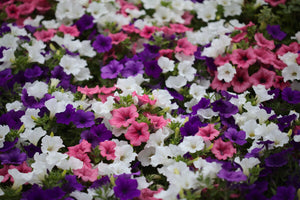
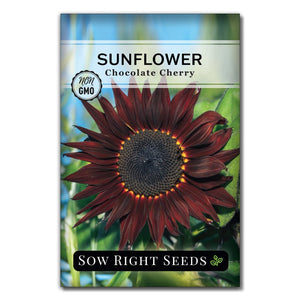
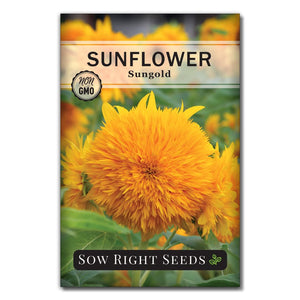
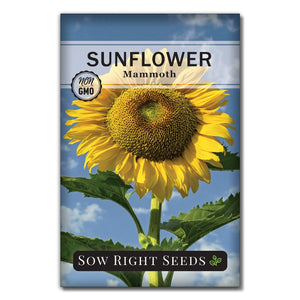
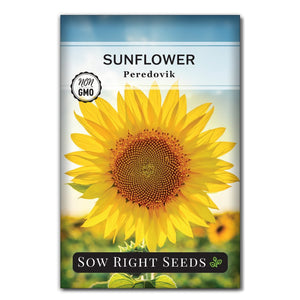
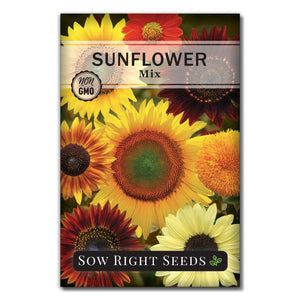
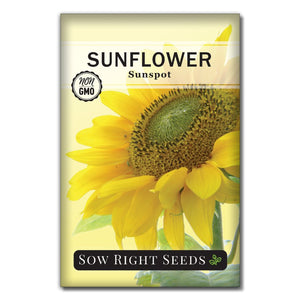
Leave a comment